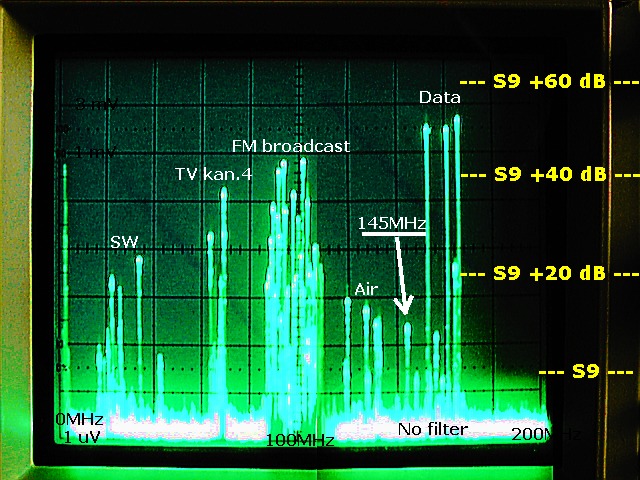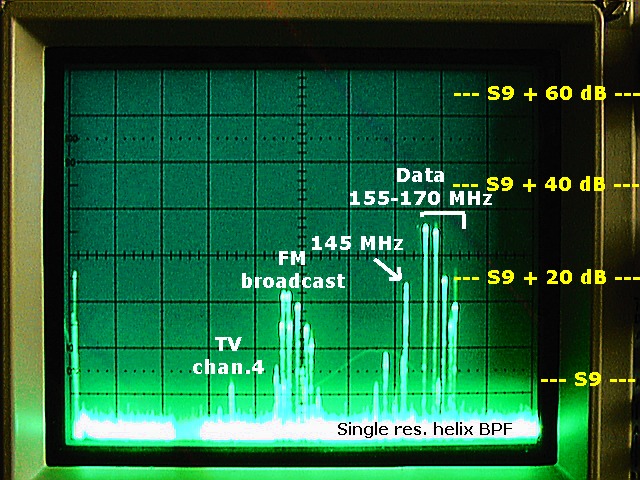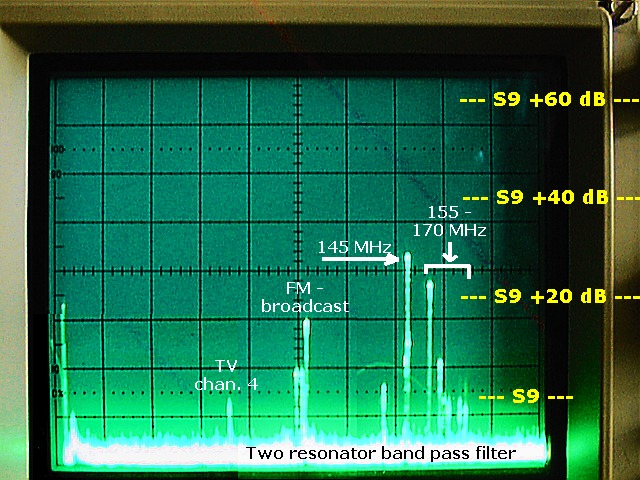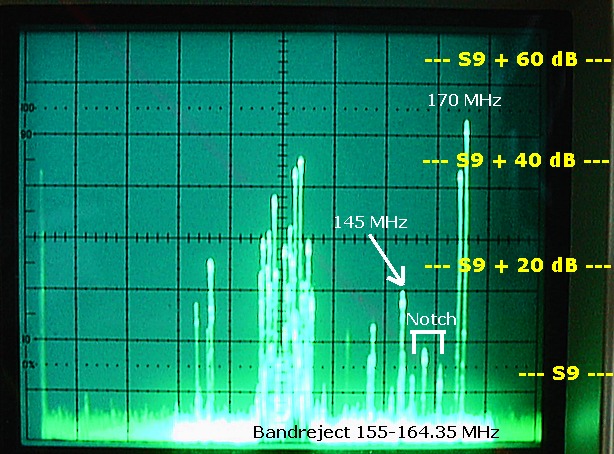| In fig.1 the spectrum, as received on my 145/435 MHz dual band antenna at 45 meter height 10km east of
Rotterdam center, without filtering.
The pager networks ("Data") sometimes peak to S9 + 55dB. Such strong signals will overload the mixer stage of many receivers, causing loud noises (IMD). TV = S9 +35dB, FM = S9 + 45 dB.
|
 |
| Fig.1, received spectrum without any filtering.
|
|
|
Compare this graph with the one above. See the difference ! In fig.4 the spectrum, measured through a two resonator helix band pass filter for 145 MHz of 10 cm diameter. All signals outside two meters are attenuated strongly. The strong 145 MHz-signal is our local repeater pi3rtd, 1.5 Werp at about 10 km distance. TV channel 4 is attenuated 40 dB. FM-broadcast by 30 dB. The data signals above 155 MHz showed to be attenuated 30 to 55 dB. |
|
| Fig.4, spectrum through the two resonator helix band pass filter.
|
|
| In fig.2 the spectrum, as measured through the 3 notch helix notch filter. The filter was designed to
suppress only 155-165 MHz. Compared with fig.1, the two signals in this band portion are suppressed enormously.
FM broadcast and TV channel 4 are only a bit weaker. But, most other signals are nearly as strong as before, and still could cause noises. |
|
| Fig.2, spectrum through the 3-notch coax cable helix filter.
|
|
|
fig.3 the spectrum, measured through one big size (18 cm diameter prototype), 145 MHz helix band pass
filter. Now all signals outside the two meter band are attenuated.
The data-signals above 155 MHz are at least 20 dB attenuated. |
 |
| Fig.3, spectrum through the single resonator helix band pass filter 145 MHz. |

